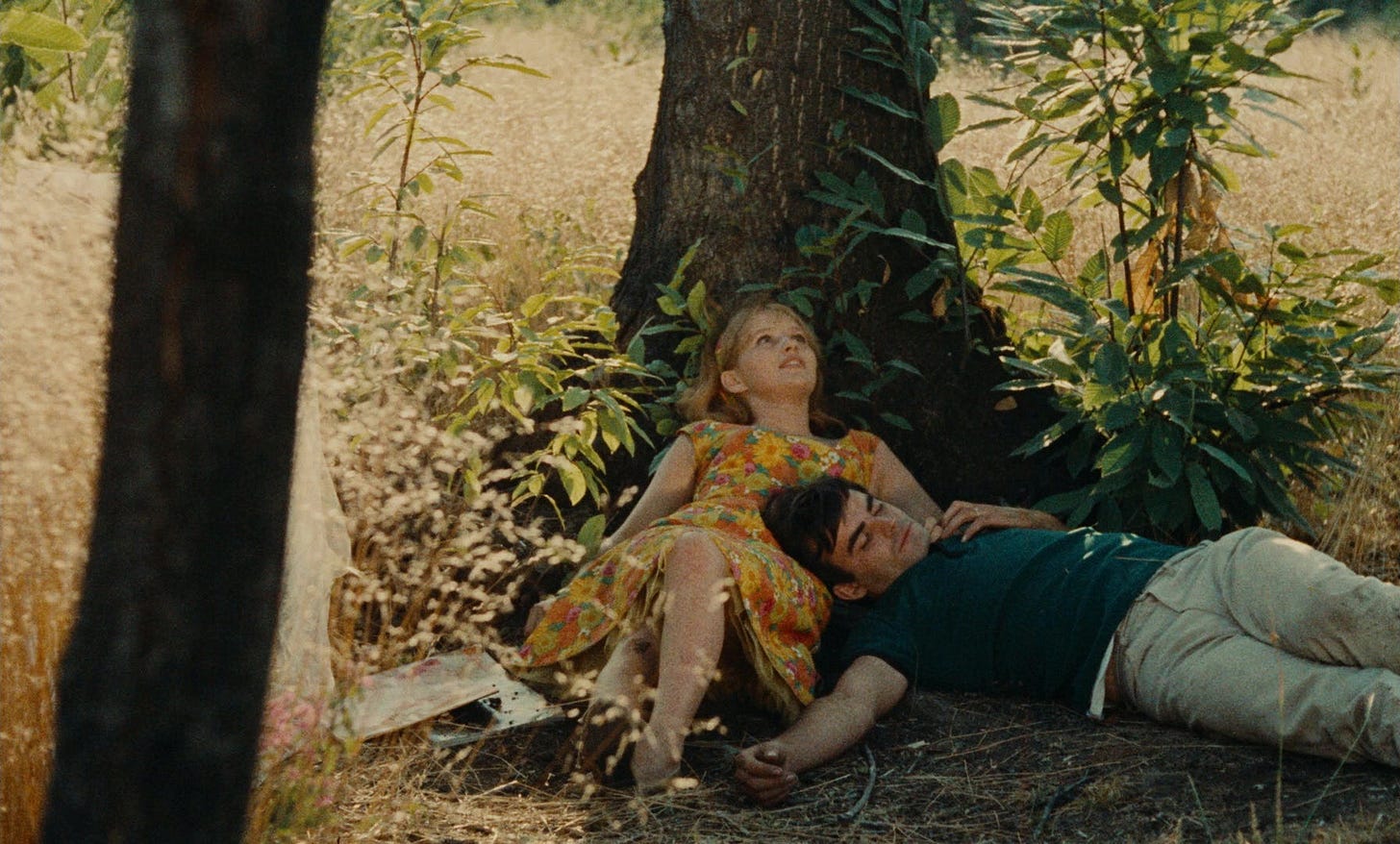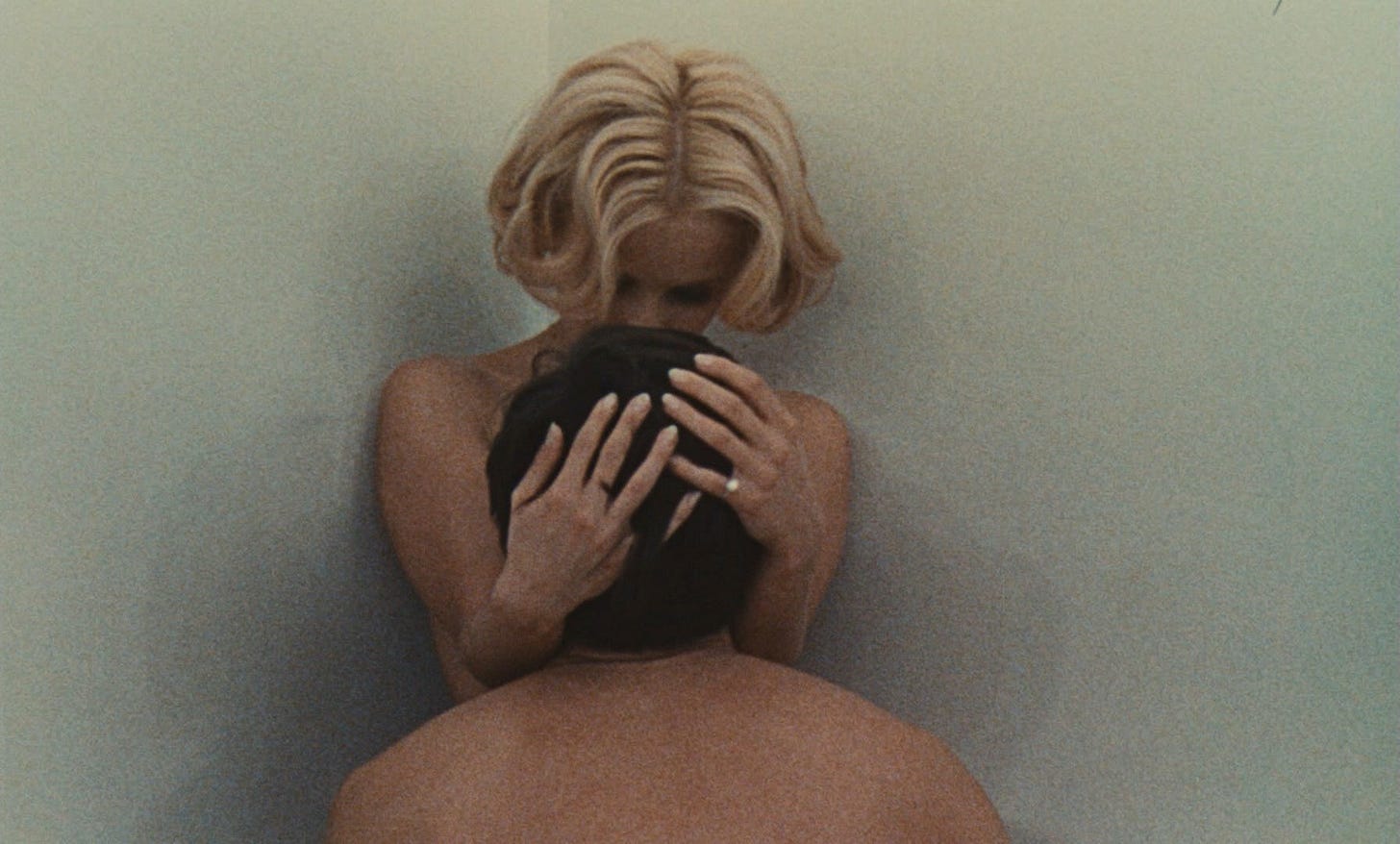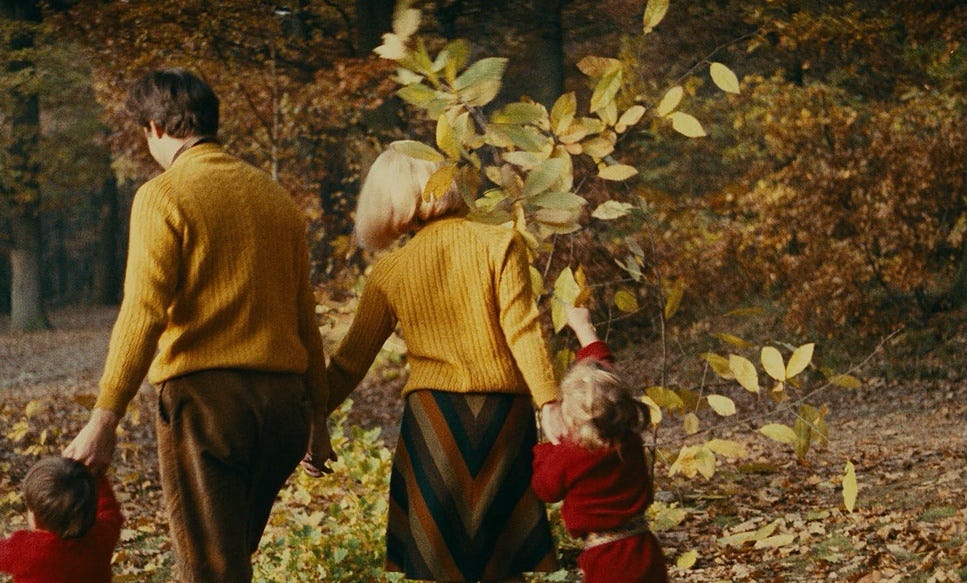I’ve started a new job and it's been really difficult to find the time to prioritize this newsletter. I often wonder how to sustain this new habit of mine, that I’ve grown to love and to rely on, as I head towards the last months of my graduate program and re-enter the “real world”. This question will undoubtedly find many different answers this year, but for now, it’s “find a really short movie (who has time for 3h30 hour films these days?) and carve out a couple hours out of your week to write as best as you can”. That’s the strategy.
When I think of short films, I gravitate towards the French New Wave. These guys knew the meaning of “short and sweet”. I perused the unfamiliar films of familiar favorites like Truffaut, Godard or Resnais, but a part of me felt very strongly about exploring a director who I didn’t know much about: Agnès Varda.
The only woman in a group of men, who outlived almost all of them, known for her ability to juggle fiction and non-fiction, Agnès Varda was, is and always will be, an institution. But I’ve only seen a handful of her films, so it was time to dig deeper. I picked one of her lesser known fiction films, Le bonheur (1965), and little did I know I stumbled upon a visual feast of visceral feminism.
A French pastorale?
Le bonheur (which was once translated as Happiness in English but has now retained its French title) takes place during the summer months in a little town outside Paris called Fontenay-aux-Roses, and sees happily-married couple François and Thérèse live a perfectly content and confined routine with their two, very cute children. They both work, he is a carpenter, she is a dressmaker, they go to the country on Sundays in color-coordinated outfits, they make love often, and their children never cry. What’s wrong with this picture?
At first, absolutely nothing, but it is in the way Varda opens her film with a carefully and aggressively edited montage of a wilting sunflower, superimposed with the film’s title in bright yellow, that we quickly understand this won’t be a simple story of marital bliss. What we are about to see is wild, asymmetrical, and completely artificial.
Varda starts with the editing, the Mozart music, the vibrant and perfectly-colored image, and in this trifecta of filmmaking, we start to notice the cracks and the unnaturalness with which the family performs their societal and familial duties. Something eerie is afoot, and slowly, the film reveals itself as a feminist satire.
New waves, new frames
Interestingly, François is portrayed by the television actor Jean-Claude Drouot (a 1960s clone of Bill Hader) and Thérèse and the kids by his actual wife and children. Apparently, Varda was inspired by a magazine article on Drouot’s “perfect” family - which I cannot help but link to her photography roots and documentary future.
Varda’s camera is unusual, full of color, and quick to cut. Blink and you’ll miss key frames. It pulls us in and rejects us both at the same time, making us wonder if what we see is the truth. A part of the French New Wave herself, Varda heavily focused on the power of editing to add another cinematic and emotional dimension to her films. She delivers everything you have ever expected from the French New Wave, and from the French in general.
Varda also visualized words in a not-so-subtle manner, always suggesting something else might be at play, or reinforcing a particular feeling. In her third feature film, but her first one in color, she chose to use vivid blues, whites, yellows, reds - colors that very obviously signify happiness - to throw off her audience and to make the events unfolding before us even more brutal and cruel.
Indeed, things take a turn: François meets and falls in love with Émilie, a young postal worker who is coincidentally moving to his town, and begins an affair with her. But François, like all clichéd ideas of the French (no doubt this film played a role in this illusion), believes in free love. To him, it is possible (and exciting) to love both his wife and his mistress. They can coexist because he has enough love to go around, and to him, they are different. In his words, Thérèse is a “hardy plant” and Émilie an “animal set free”. And all is well and good because François loves nature (again, his words).
Plot twist
Apologies for the spoiler, but it has to be done (feel free to stop reading to preserve a certain sense of surprise and horror when watching, though the logline online gives it away in a matter of seconds). After Thérèse notices her husband is happier than usual, he tells her he has a mistress. And so, under a tree, François uses another bucolic analogy (this time, orchards and apples) to convince her to stay and to share his love. Poor Thérèse, who has only known happiness through François and her children, cannot deny him what makes him even happier. They take advantage of their kids’ nap to make love once again, but when François wakes up, Thérèse has disappeared. He finds her body, pulled from the lake, drowned. On purpose? Varda never tells.
A few months of mourning seem enough for François - in the fall, he marries Émilie who quickly dons her new wife hat, and easily takes care of the children, the home, and François in an eerily similar way. Same wife, different woman. Happily ever after, this time in autumnal colors.
A harrowing feminist moment
When Le bonheur came out, it was heavily criticized because it seemed to endorse the role of the submissive, passive woman, and it seemed to promote patriarchal myths about free love, but that was exactly the point. In 1965, the women’s rights movement was in full swing, but on-screen representation of women, even the fair and just ones, were only ever done by men (just look at Godard’s cinematography). Who spoke for them? Who spoke for their experiences?
Agnès Varda did. In more obvious ways, in Cleo from 5 to 7 and Vagabond, but also, subtly, in Le bonheur, where her female characters are perfectly grounded in time and space, working and financially independent. But it is because Varda throws her audience, sometimes jarringly, into the artificial and perfect world of François’ free love, that we notice these women do not actually speak, do not react, and they bend to his every will.
It is only at the end, when one woman is replaced by another in the perfect patriarchal family structure, that the truth comes out harrowingly: Emilie, who was once independent, loses that spark and fits the mold perfectly laid out for her by Thérèse whose only escape was death. Such a gloomy ending for such a visually bright film. The interchangeability of these women, through the male gaze, is a chilling sight to behold. It’s haunted me ever since.
Le bonheur is streaming on Max… and it’s only 1h20m.
It lives on
The prize for “most obviously inspired” goes to… *drumroll*…
Wes Anderson! Good job.
I see this film heavily referenced in Moonrise Kingdom and The French Dispatch: from the vibrant color palette and wanting to live in the woods, to the symmetrical representation of a small town in France and extreme close-ups of writing and really small objects - it was almost comical to see how much Anderson pulled from here. But hey, no shade. Film is a medium of inspiration, reaction, copy. Just look at Tarantino.
“I guess I’ll see you in the movies.”










